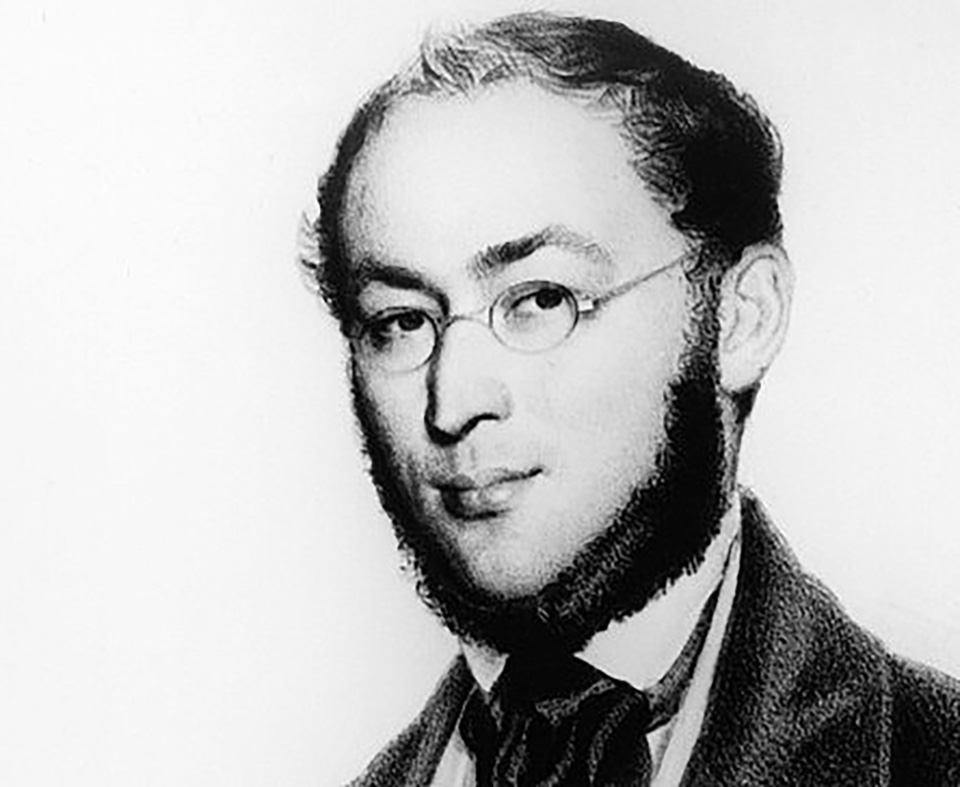
What’s the connection, do you think? Franz Suppé was born in 1819 in the Kingdom of Dalmatia, now part of Croatia near the north-east corner of the Adriatic coast, just across the water from Italy. In that year, Schubert, Weber and Beethoven were celebrities at the peak of their musical careers. In Italy, the 27-year-old Rossini was beginning to make a name for himself with his first operas. Schumann and Chopin were both nine-year-old boys.
Suppé spent his childhood in Zadar, where he studied flute and harmony and was encouraged by the local bandmaster and the cathedral’s choirmaster. Franz’s upper-class Austrian parents had solemnly named their son Francesco Ezechiele Ermenegildo de Suppé but as a young man in Vienna, he wisely simplified his tortuous name and replaced the “de” with the German “von” which meant much the same thing.
Even if the name Suppé isn’t immediately familiar, you have almost certainly heard his music because it was frequently used in animated cartoons, including those featuring Bugs Bunny, Mickey Mouse and Popeye. This is the spinach connection. Popeye the Sailor Man (to award him his full title) first appeared in a 1929 comic strip. In the early 1930s he graduated to movies and in almost every cartoon Popeye was seen consuming spinach by the can-full to acquire super-human strength. According to the scientist and writer Samuel Arbesman, the result was that the sales of spinach in America increased by a third. Today, more than 94 percent of Americans evidently still associate spinach with Popeye. And not only Americans. Last week, a Thai friend watched me make a spinach pizza in the kitchen and joked that I would become as strong as Popeye. Of course, spinach contains iron, but no more than other green vegetables and nutritionists are aware that no amount of dietary iron results in larger muscles. I am sorry if this comes as a disappointment, but that’s how it is. Now then, where was I? (I was beginning to wonder the same thing. – Ed.)
From the age of about thirty, Suppé worked as a conductor in several theatres in Vienna, and eventually began to present his own operas there. He composed the music for over a hundred productions at the Theater in der Josefstadt and the Theater an der Wien. Altogether he wrote about thirty operettas and an enormous amount of other music, most of his work has simply fallen into oblivion. His fame today rests on only a handful of works notably the overtures Poet and Peasant and Light Cavalry. Suppé also wrote the music and words of the song O du mein Österreich (Oh, My Austria). It’s a jolly march in “oom-pah” style and has since become a national song.
Franz von Suppé (1819-1895): Overture: Poet and Peasant. Vienna Philharmonic Orchestra cond. Riccardo Muti. (Duration: 10:46; Video: 1080p HD)
Known in German as Dichter und Bauer, this work began life in 1846 as the overture to a comedy play by Karl Elmar and set in Upper Bavaria. It was first performed the same year at the Theater an der Wien. But the story doesn’t end there, because in 1900 the German conductor and composer Georg Kruse expanded the music, along with other works by Suppé into an operetta of the same name.
The overture is scored for a conventional orchestra with the addition of the now obsolete ophicleide, a peculiar keyed-brass instrument that looks like a cross between a bassoon and an under-nourished tuba. Today, it is usually replaced with a tuba in modern orchestral performances. The work begins with quiet fanfare-like figures played on the horns and low brass. A heroic passage by the full strings, leads into an extended and lyrical cello solo accompanied by the harp. The cello melody becomes interrupted by woodwind comments (listen to the lovely woodwind phrasing!) and at 03:08 there’s a magical change of mood by moving to a new key. At 04:19 Suppé creates a dramatic switch into bucolic, fierce-sounding dramatic music.
Later, at 06:09 we drift into a delightful Viennese-style waltz reminiscent of Johann Strauss I, whose music was then all the rage in Austria. The waltz turns into a scamper towards what seems to be the finale. But Suppé has another surprise, for the music enters a mysterious dream-like passage (07:50) which eventually leads us back into the Viennese waltz (08:16), a change of key and the scampering music (09:01) returns driving towards the finale with much timpani bashing, fiery brass flourishes and sparkling string writing. To modern ears perhaps some of the music might seem slightly predictable, but it’s well-written and orchestrated and must have gone down a treat with the Viennese audience, no doubt with a great deal of merriment and foot-tapping.
Incidentally, it would have been immensely satisfying to tell you that Franz von Suppé was also a connoisseur of spinach, thus creating a pleasing literary symmetry. But as far as I know, he wasn’t.






